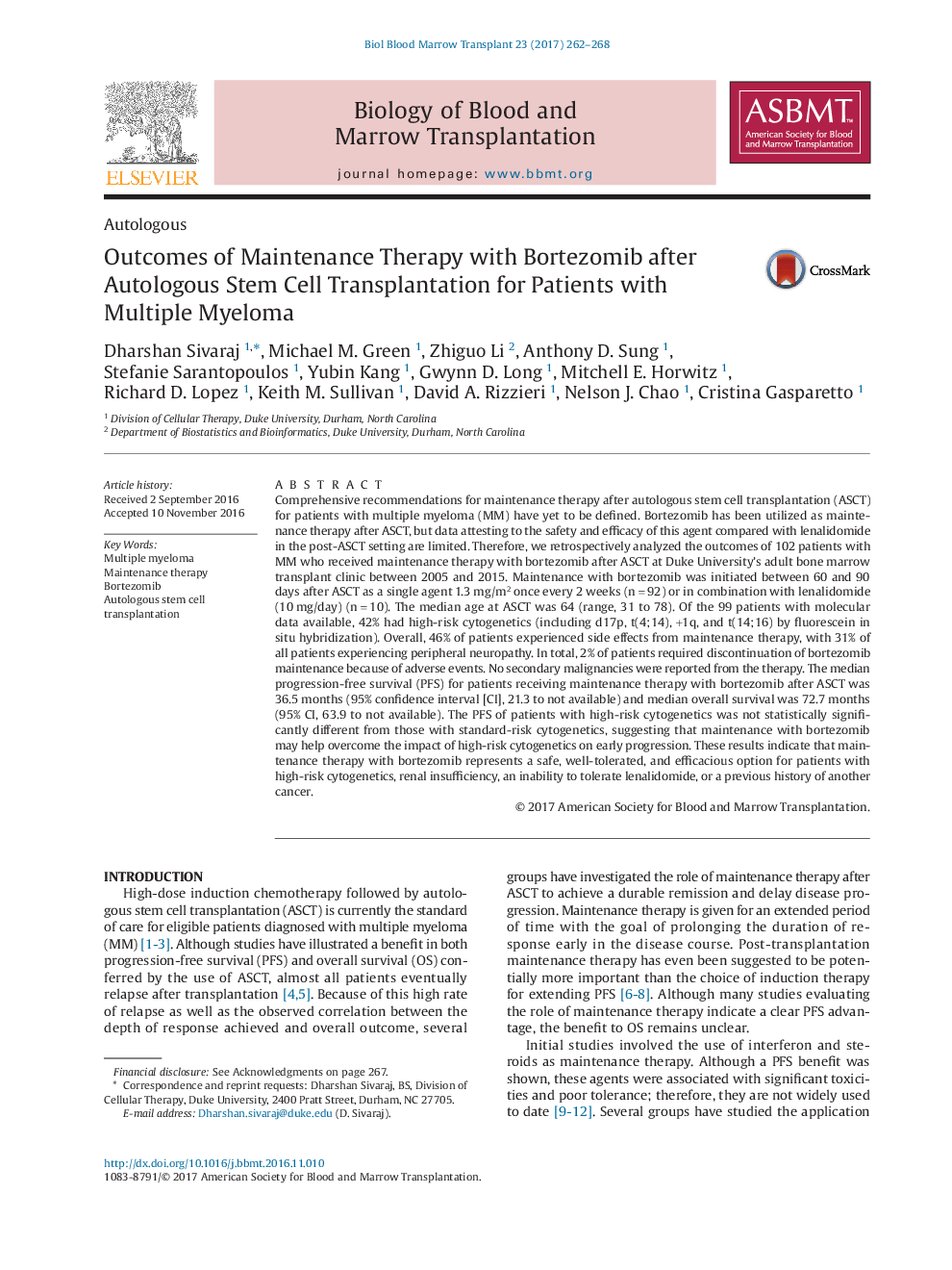| کد مقاله | کد نشریه | سال انتشار | مقاله انگلیسی | نسخه تمام متن |
|---|---|---|---|---|
| 5524245 | 1546245 | 2017 | 7 صفحه PDF | دانلود رایگان |

- We conducted a retrospective review analyzing outcomes of maintenance therapy with bortezomib after autologous stem cell transplantation
- A total of 102 patients treated from 2005 to 2015 were analyzed
- Two percent of patients required discontinuation of bortezomib maintenance because of adverse events
- Bortezomib in the maintenance setting is well tolerated and efficacious, and it can be continued without evidence of secondary malignancy until disease progression
Comprehensive recommendations for maintenance therapy after autologous stem cell transplantation (ASCT) for patients with multiple myeloma (MM) have yet to be defined. Bortezomib has been utilized as maintenance therapy after ASCT, but data attesting to the safety and efficacy of this agent compared with lenalidomide in the post-ASCT setting are limited. Therefore, we retrospectively analyzed the outcomes of 102 patients with MM who received maintenance therapy with bortezomib after ASCT at Duke University's adult bone marrow transplant clinic between 2005 and 2015. Maintenance with bortezomib was initiated between 60 and 90 days after ASCT as a single agent 1.3âmg/m2 once every 2 weeks (nâ=â92) or in combination with lenalidomide (10âmg/day) (nâ=â10). The median age at ASCT was 64 (range, 31 to 78). Of the 99 patients with molecular data available, 42% had high-risk cytogenetics (including d17p, t(4;14), +1q, and t(14;16) by fluorescein in situ hybridization). Overall, 46% of patients experienced side effects from maintenance therapy, with 31% of all patients experiencing peripheral neuropathy. In total, 2% of patients required discontinuation of bortezomib maintenance because of adverse events. No secondary malignancies were reported from the therapy. The median progression-free survival (PFS) for patients receiving maintenance therapy with bortezomib after ASCT was 36.5 months (95% confidence interval [CI], 21.3 to not available) and median overall survival was 72.7 months (95% CI, 63.9 to not available). The PFS of patients with high-risk cytogenetics was not statistically significantly different from those with standard-risk cytogenetics, suggesting that maintenance with bortezomib may help overcome the impact of high-risk cytogenetics on early progression. These results indicate that maintenance therapy with bortezomib represents a safe, well-tolerated, and efficacious option for patients with high-risk cytogenetics, renal insufficiency, an inability to tolerate lenalidomide, or a previous history of another cancer.
Journal: Biology of Blood and Marrow Transplantation - Volume 23, Issue 2, February 2017, Pages 262-268